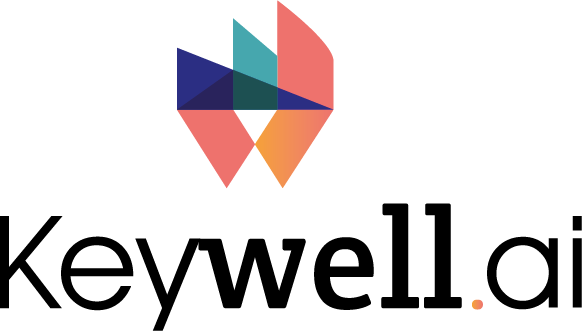At Keywell, we recently partnered with a human services agency to address a significant challenge in the public sector: managing complex information and large volumes of evolving regulations.
This case study examines our work developing a technical solution to streamline research and help internal teams develop improved systems for a child welfare agency, demonstrating that our advanced AI and data management capabilities can improve compliance and accelerate progress in highly regulated environments.
The Problem: Navigating the Legal and Regulatory Labyrinth
Human services agencies face a daunting task when managing and interpreting large amounts of complex information. These organizations must sift through hundreds of pages of legal documents, policies, and regulations that are often dense with legal jargon and subject to frequent updates. For one agency undertaking a legacy system transformation, this challenge was particularly acute. The team was tasked with modernizing their child welfare system, which required a deep understanding of federal, state, and local regulations. These regulations, which govern every aspect of child welfare from case management to legal proceedings, are spread across a wide range of documents, each potentially hundreds of pages long. These regulations are also dynamic, with government agencies frequently issuing new policy updates. This results in a huge, fluid body of interconnected information that agency staff must continuously interpret and apply in their daily work. The research team, business analysts, and system developers faced a daunting research task. They spent countless hours sifting through documents to find relevant information and understand complex legal concepts. They also needed to ensure that the new system they were developing would be fully compliant with all applicable regulations. This manual process was highly inefficient, and there was a significant risk of missing critical details. The challenge was clear: The team needed a way to efficiently process, understand, and apply a body of evolving information in a way that would support the development of a modern, compliant, and effective child welfare system.The Solution: A Curated AI Research Tool for HHS Information Management
To address these challenges, Keywell developed an innovative AI-powered technical solution. This digital tool, designed specifically for the human services sector, aims to streamline the research process and enhance system development. The solution is versatile and serves the needs of researchers, business analysts, and social workers. The solution can analyze and interpret complex legal and policy documents. It can process hundreds of pages of dense text, extract key information, and make it readily accessible to users. One of the core features of this tool is its ability to answer user queries in natural language. Users can ask questions about specific regulations, definitions, or procedures, and the system provides concise, relevant answers. Notably, the tool doesn’t just offer a generic response — it provides traceability by referencing the specific documents and sections where the information was found. It can also handle potentially conflicting information. When multiple documents provide different definitions or interpretations of a concept, the tool presents all relevant information so users can make informed decisions based on the most up-to-date or applicable sources. The system also offers features such as document summarization (“Summarize Assembly Bill No. 3176”), concept searches (“What does domicile mean in this context?”), and the ability to simplify complex legal language into more accessible terms (“Explain what this policy means for social workers”). This helps users quickly grasp the essence of lengthy documents and understand legal concepts more easily. Keywell designed this solution with data security and compliance in mind. The system is intended to be deployed within the client’s secure environment. No information leaves the agency security footprint, including questions asked by users containing Personally Identifiable Information (PII) or Protected Health Information (PHI). Sensitive information remains protected, while the agency still benefits from the power of AI-driven analysis. The solution has garnered positive feedback from users who recognize its potential to significantly reduce research time and improve the accuracy of information retrieval in their daily work.What’s Next? Scaling Smart Solutions Across Human Services
We see potential for broader applications across the public sector. There are several areas where this AI-powered solution could be beneficial:- Child welfare case management and service referrals: By summarizing assessments from various evaluations (such as needs, psychological, safety, risk, and permanency), the tool can provide service referrals for individuals.
- Health and human services agency research: Our team has worked with health and human services agencies for decades, and one common theme is that projects are often delayed due to policy research and interpretation needs. While AI tools will not replace legal and regulatory advisement, it is a powerful tool for agency staff to surface relevant policies and apply research to agency initiatives.
- Systems development support: The solution can analyze system specifications and streamline the development process to ensure alignment with regulatory requirements.





